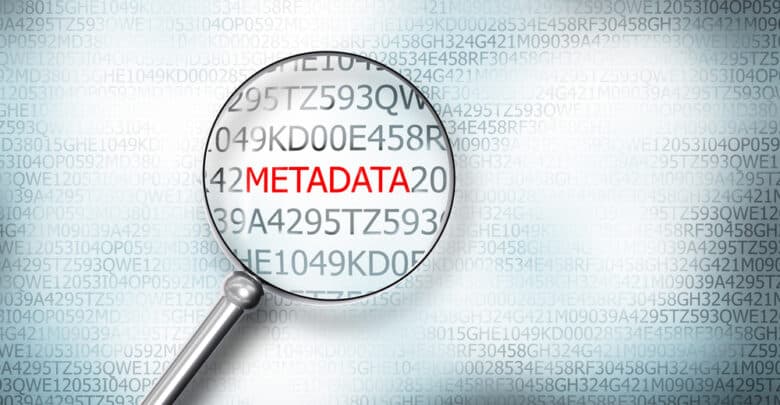Metadata in Blockchain Transactions: What to Know

Explanation of Metadata in Blockchain Transactions
Although a blockchain’s principal function is documenting and verifying the transfer of digital assets, including cryptocurrencies such as Ether and Bitcoin, metadata makes it better to include additional context or information to their transactions. In the blockchain transactions context, metadata entails data that is not directly linked to the movement of cryptocurrency but can offer extra functionality to the transaction.
The major types of metadata in blockchain transactions include on-chain and off-chain metadata.
On-chain metadata
Because this metadata is instantly stored on the blockchain, it is part of the transaction data. One can find notes, transaction labels, documents, and notes in on-chain metadata.
Off-chain metadata
The data manifests in the transaction but not directly kept on the blockchain. Links to other contents, for instance, web URLs, documents, or files, can offer additional information concerning the transaction.
Understanding On-chain and Off-chain Metadata Storage Mechanism?
The blockchain’s data structure comprises on-chain metadata. This data is permanently saved and copied across all network nodes and is an element of the blockchain’s ledger.
Most of the on-chain metadata is stored within the actual transactions. The blockchain comprises transactions with payloads comprising relevant metadata.
Off-chain metadata is stored off the blockchain in different locations, such as decentralized storage systems, off-chain scaling solutions, the Lightning Network, and external databases. Blockchain utilizes cryptographic pointers or hashes to refer to off-chain metadata, creating more extensive or less crucial data storage space.
Illustrations of Metadata in Blockchain Transactions
Timestamps
Each blockchain’s block comprises a timestamp showing the instance the block was added to the blockchain. A transaction’s timing is recorded through the metadata.
Transaction information
Examples of metadata that can be included with every transaction include recipient and sender addresses, transaction amounts, and distinct transaction IDs.
Smart contract information
Input data and parameters needed for the contract’s operation can be incorporated into the blockchain when smart contracts are not executed on a blockchain.
Digital signatures
They verify the legality of transactions and show ownership. Metadata comprises digital signatures.
Oracles
The external devices offer smart contracts access to actual-world data. The oracle’s data might be included in blockchain metadata.
On blockchains such as Ethereum, metadata might comprise information concerning the gas fees linked to processing transactions.
NFT metadata
They mostly contain metadata, for instance, descriptions, creators, and additional information concerning the physical or digital assets they represent.
Adding Metadata to a Blockchain Transaction
Creating a smart contract
A contract should be created before the incorporation of metadata. Instructions concerning its storage are included in the contract.
Interacting with the smart contract
A person should communicate with the smart contract by sending a transaction to include metadata to a blockchain transaction. Ethereum wallet apps and libraries such as ethers.js or web3.js can be utilized.
Confirming the metadata
Interacting with the smart contract and reading the metadata variable makes it possible to confirm the metadata after the transaction is confirmed and added to the blockchain.
Use Cases of Blockchain Metadata
Supply chain management
Organizations can enhance transparency and traceability by including transportation, product production, and quality-associated metadata on a blockchain.
Digital identity and authentication
Blockchain metadata can aid in safely managing and preserving private data and credentials.
Smart contracts
Metadata is utilized by self-executing contracts to decide how and when to implement a given condition.
NFTs and digital assets
Digital assets and NFTs regularly utilize blockchain data to offer digital collectibles, artwork, and assets value and meaning.
Conclusion
Storage costs and scalability concerns are critical since the expansion of blockchain networks reduces their efficacy and evokes the need for more resources. Another challenge is data privacy and security, especially when handling sensitive or private information.
Handling these challenges is critical for developing and adopting blockchain technology in several industries. Further, overcoming the hurdles in blockchain metadata requires a diversified approach.
Tokenhell produces content exposure for over 5,000 crypto companies and you can be one of them too! Contact at info@tokenhell.com if you have any questions. Cryptocurrencies are highly volatile, conduct your own research before making any investment decisions. Some of the posts on this website are guest posts or paid posts that are not written by Tokenhell authors (namely Crypto Cable , Sponsored Articles and Press Release content) and the views expressed in these types of posts do not reflect the views of this website. Tokenhell is not responsible for the content, accuracy, quality, advertising, products or any other content or banners (ad space) posted on the site. Read full terms and conditions / disclaimer.




